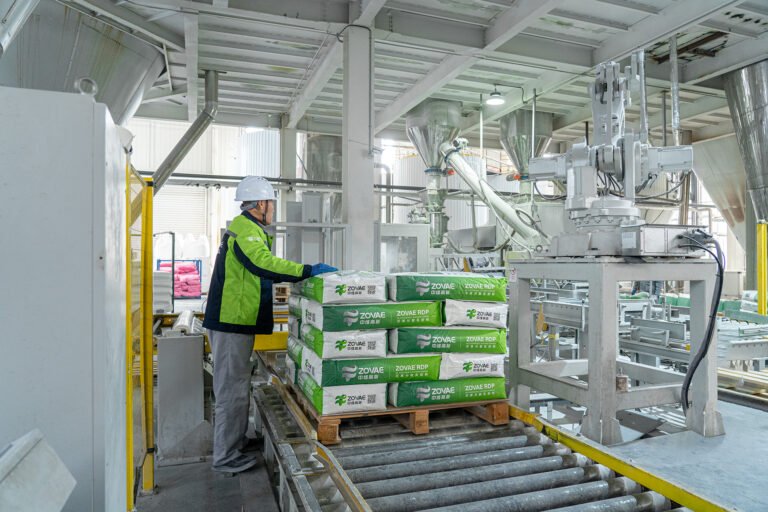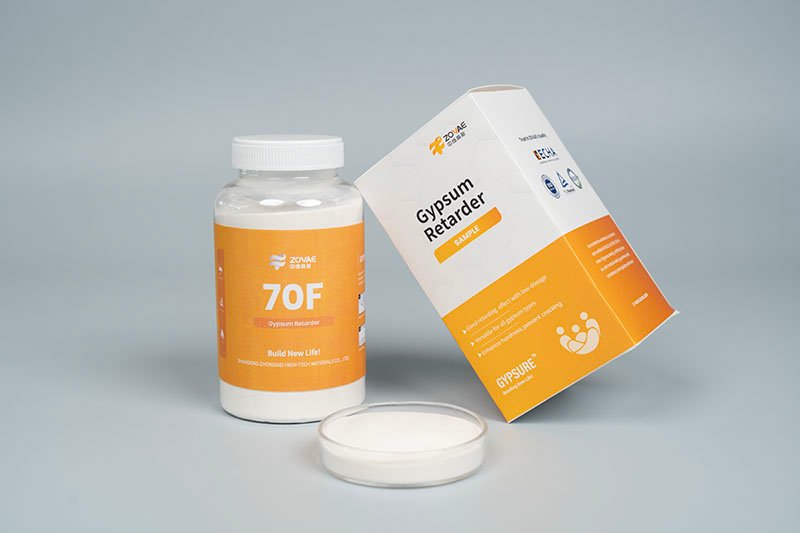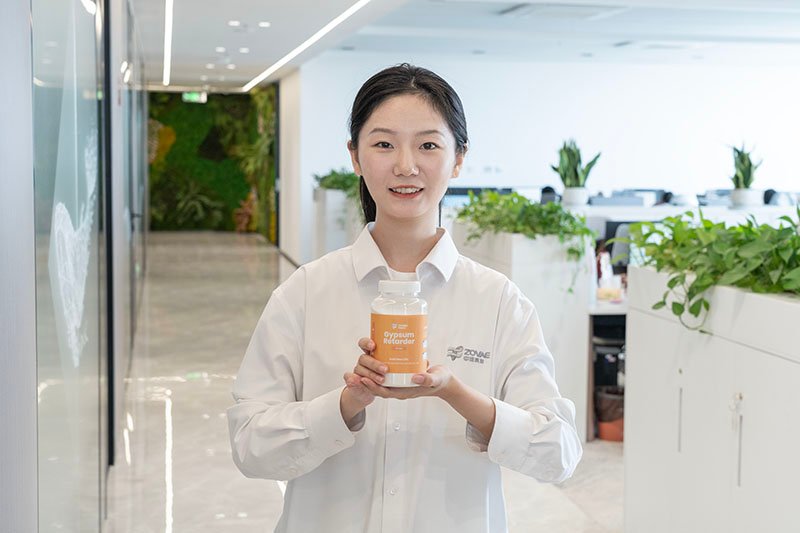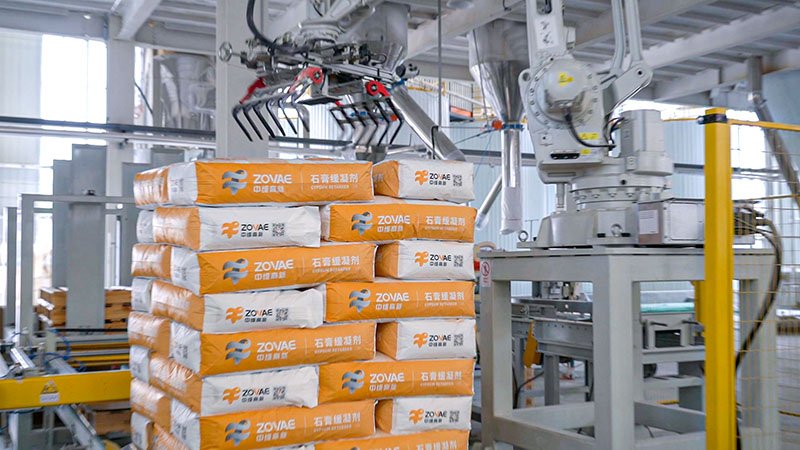
Merry Christmas ZOVAE
Wishing You Joy & Prosperity
Gypsum plaster has transitioned from a specialized option to a cornerstone in interior construction, adeptly addressing critical challenges such as delayed project timelines, erratic surface finishes, and resource-intensive site operations. In stark contrast to traditional sand-cement plaster, which necessitates extensive water curing and precise on-site mixing, gypsum plaster is delivered as a pre-formulated powder that blends effortlessly with water, applies with ease, hardens rapidly, and cures to a sleek, paint-ready finish. Its multifaceted benefits permeate every stage of a project: diminished shrinkage cracks, accelerated trade transitions, decreased oversight needs, conservation of water, reduced structural load, enhanced fire safety, and consistent room-to-room quality. This exhaustive guide elucidates the essence of gypsum plaster, dissects its superior performance, contrasts it with cement plaster, identifies its constraints, and provides detailed protocols for specification and application to fully harness its potential for productivity gains, superior aesthetics, and sustainable practices.
Gypsum plaster is a premier interior finishing material rooted in calcium sulfate hemihydrate, a compound derived through the calcination of gypsum (calcium sulfate dihydrate). This process partially dehydrates the raw material, producing a reactive hemihydrate powder widely recognized as Plaster of Paris (POP). Upon mixing with water, a rehydration reaction ensues, forming interlocking calcium sulfate dihydrate crystals. This microscopic, needle-like crystalline structure imparts set gypsum with its hallmark attributes of hardness, smoothness, and dimensional fidelity.
Key Aspects of Composition and Variants:
The crystallization mechanism of gypsum setting, unlike the hydration of cement clinker phases, results in minimal heat generation and negligible volume alteration. These inherent traits form the foundation for many of the advantages explored in subsequent sections, distinguishing gypsum plaster as a unique and efficient material in construction applications.
Selecting the appropriate plaster involves evaluating critical factors such as project timelines, surface quality, overall costs, operational risks, and environmental impact. Gypsum plaster and cement plaster present contrasting profiles across these dimensions, each suited to specific scenarios.
Speed and Logistics
Finish and Defects
Supervision and Consistency
Water, Weight, and Sustainability
Fire, Thermal, and Indoor Environment
Limitations
This comparison reveals gypsum plaster as a superior choice for interior projects prioritizing speed, finesse, and eco-friendliness, whereas cement plaster retains relevance for exterior durability and wet conditions.
Gypsum plaster’s innate silky texture clings effectively to prepared masonry, concrete, and block surfaces, ensuring secure adhesion. Its thixotropic nature enables applicators to navigate surface inconsistencies smoothly, blend edges seamlessly, and craft precise corner details and architectural reveals. The material’s uniform wetting and spreading properties minimize the number of trowel strokes required, achieving consistent layer thickness and yielding flatter walls with reduced need for corrections.
During setting, gypsum plaster emits significantly less heat and undergoes minimal volume change compared to cement alternatives. Combined with precisely managed water requirements in contemporary formulations, this characteristic curbs shrinkage stresses. Consequently, the material exhibits a lower propensity for hairline cracks and maintains stability at corners and joints—an essential quality for expansive, flat surfaces under direct or angled lighting where even minor flaws become conspicuous.
With a typical setting period of about 25–30 minutes (adjustable via set modifiers), gypsum plaster empowers teams to transition efficiently from mixing to finishing. This rapid hardening unlocks pivotal scheduling benefits: priming and painting can commence earlier, mechanical, electrical, and plumbing (MEP) installations and fit-outs face fewer delays, and completed units can be turned over sooner. For phased developments such as hotels, multi-family residences, and educational facilities, this time efficiency compounds into substantial program acceleration.
Unlike cement plasters that rely on water curing for strength development, gypsum plaster gains its robustness through crystallization, obviating the need for post-application wetting. This elimination reduces labor efforts, shortens task durations, mitigates risks associated with inadequate curing practices, and conserves water—a significant advantage for sustainability-focused initiatives and projects in water-scarce regions.
The ready-to-use powder format, coupled with reduced mixing variables and swift setting, curtails labor inefficiencies and site clutter. Crews can cover expansive areas daily with minimal rework. In bustling interior projects, the absence of curing routines and water hoses translates to tidier workspaces and diminished risks of damaging adjacent completed finishes or materials.
Gypsum plaster possesses a density generally lower than sand-cement mixes, lightening the load on structural frameworks and easing handling for workers. The hardened surface withstands typical indoor wear effectively in residential and commercial settings. For environments demanding enhanced durability, such as school corridors or warehouse zones, options like reinforcement meshes, higher-density formulations, or protective trims can be integrated.
A defining feature of gypsum plaster is its exceptional surface quality. When trowel passes are timed correctly—spanning initial application, leveling, floating, and polishing—the resultant substrate is smooth and compact, frequently needing only a sealer or primer before painting. Its uniform, fine porosity ensures that decorative treatments, including matte paints, wallpapers, and textured coatings, apply evenly, elevating the final aesthetic appeal.
Factory-prepared formulations diminish on-site inconsistencies, enabling crews to be trained on consistent water-to-powder ratios, predictable work windows, and standardized finishing techniques. Site overseers can concentrate quality assurance and control efforts on substrate readiness, application thickness, surface flatness, detail precision at edges, and moisture levels prior to coating, rather than constantly monitoring sand quality or curing consistency.
Gypsum is a plentiful resource, sourced from natural deposits or as a synthetic by-product from industrial activities like flue gas desulfurization in power plants. Employing gypsum plasters alleviates pressure on river sand extraction, a practice facing regulatory scrutiny due to environmental concerns in many areas. The no-curing process conserves water, and reduced weight can enhance transport efficiency. Additionally, at the end of its lifecycle, uncontaminated gypsum waste can often be recycled where facilities are available.
Embedded within gypsum plaster is chemically bound water that, when subjected to elevated temperatures, transforms into steam, absorbing thermal energy and slowing temperature escalation. This inherent trait adds a passive fire-protective layer to interior walls and ceilings. While comprehensive fire ratings depend on system configuration, application thickness, and accompanying assemblies, gypsum plaster remains a valuable component in fire safety planning.
Gypsum plaster’s low thermal conductivity contributes to maintaining stable interior temperatures by tempering heat transfer across surfaces. While not a primary insulation material, it supports energy-efficient building designs. Its neutral chemical profile is compatible with a broad array of interior finishes, and factory formulations can achieve low odor and minimal volatile organic compound (VOC) emissions, fostering healthier indoor environments.
Gypsum plaster’s adaptability in shaping allows it to cater to diverse aesthetic demands, from sleek, modern planes to elaborate cornices and moldings. It can be pre-cast off-site into decorative panels or crafted on-site using templates and trims for bespoke details. The material accepts various textures, knockdown finishes, and specialty coatings effectively when the underlying surface is properly prepared, making it a favorite for creative interior designs.
Gypsum plaster is not engineered for continuous wet conditions or external exposure. In high-moisture areas like bathrooms, commercial kitchens, or laundry spaces, opt for moisture-resistant substrates or cement-based plasters integrated with robust waterproofing systems. In humid regions, ensure adequate ventilation during the drying phase to prevent residual moisture from affecting finishes.
In high-traffic or impact-prone interiors such as schools, medical facilities, or storage areas, consider using denser plaster grades, embedding fiberglass mesh at vulnerable points like corners, or installing protective elements like chair rails. For zones with heavy machinery or frequent contact, cementitious or polymer-enhanced finishes may offer greater resilience.
Substantial wall-mounted fixtures necessitate proper anchors and structural backing. Plan for blocking or reinforcing locations during design, and employ anchors rated for the specific substrate (plastered masonry or concrete). Relying solely on the plaster layer for significant load-bearing is not advisable.
Extreme cold slows the setting process, while excessive heat or windy conditions can shorten open time, risking premature surface hardening. Adhere to manufacturer-specified temperature ranges for application. Use approved retarders or accelerators to adjust set times when necessary, and manage airflow to maintain a practical working duration.
While gypsum plaster sets swiftly, residual moisture must still dissipate before painting or priming. Rely on moisture meters or manufacturer recommendations to determine the appropriate coating timeline. Avoid forced drying with intense heat, which may induce surface crazing; instead, facilitate gradual drying through controlled ventilation.
The success of a gypsum plaster finish hinges on a stable, well-prepared substrate to ensure adhesion and longevity.
Contemporary gypsum plasters are customized for performance through strategic additive inclusion.


While the upfront cost per bag is a consideration, the total installed cost and long-term performance are paramount.
Q1. Is gypsum plaster suitable for bathrooms and kitchens?
For non-wet areas in kitchens and powder rooms, gypsum plaster may suffice with appropriate finishes. For showers, steam rooms, and consistently wet spaces, use moisture-resistant boards and cement-based plasters with waterproofing.
Q2. How soon can I paint over gypsum plaster?
Post-set, drying must complete, influenced by thickness, temperature, and ventilation. Adhere to manufacturer drying guidelines and ensure acceptable moisture levels before priming.
Q3. What thickness should be used?
Single-coat thickness varies by product, typically within a moderate range for interior leveling. Refer to datasheets for per-pass and total build limits.
Q4. Can gypsum plaster be applied directly to concrete?
Yes, provided the concrete is sound, clean, and prepared. Dense, low-porosity concrete may require a bonding agent or primer for adhesion.
Q5. Why does gypsum plaster set faster in hot or windy conditions?
Elevated temperatures and airflow hasten water evaporation and reaction rates, shortening open time. Use retarders within limits and manage drafts to maintain workability.
Q6. Do I need control joints?
Install control or separation joints where substrates transition, spans are extensive, or building movement joints occur, aligning with underlying structures.
Q7. How do I repair localized damage?
Remove damaged areas to sound material, key edges, apply matching patching plaster, level, finish, and prime before repainting.
Q8. Is there a risk of efflorescence?
Gypsum has lower soluble salt content than some masonry. Efflorescence often signals external moisture; control water ingress and ensure dryness before finishing.
Q9. What about sound insulation?
Gypsum adds mass and airtightness, aiding sound control. For enhanced acoustics, combine with layered assemblies, resilient channels, and insulation.
Q10. Is gypsum plaster compatible with all paints and wallpapers?
Most interior paints are compatible with a suitable sealer/primer to balance suction. For wallpaper, ensure complete dryness and a smooth, sealed surface to avoid paste issues.
Q11. How is quality verified on site?
Assess flatness with a straightedge, measure thickness at designated points, inspect corner precision and reveals, check for hairlines or pinholes, and confirm moisture levels before priming.
Q12. What is the shelf life and storage practice?
Store bags in dry conditions off the ground, away from sunlight, respecting shelf life, and using a first-in, first-out stock rotation. Moisture exposure can prematurely hydrate plaster, impairing performance.
Pre-Work
During Work
Post-Work
Choosing plaster transcends mere material selection; it’s a workflow decision impacting subsequent trades. Leveraging gypsum plaster allows project teams to:
Gypsum plaster is attuned to modern construction’s imperatives of speed, quality, and mindful resource utilization. Its strengths—rapid setting, no curing necessity, low shrinkage, polished finishes, inherent fire resistance, and uniform factory quality—manifest as concrete job site advantages: fewer imperfections, abbreviated schedules, cleaner operations, and delighted stakeholders. While its limitations exist, they are addressable through practical measures: restrict to interiors, ensure dryness in service, reinforce high-impact zones, and honor application timelines. With diligent substrate preparation, disciplined mixing and finishing techniques, and compatible primers and coatings, gypsum plaster emerges as a steadfast foundation for interior spaces that dazzle immediately and endure over years.
For builders, contractors, and property owners striving to create exceptional interiors with minimal rework and uncertainty, gypsum plaster represents a shrewd, practical selection. It elevates plastering from a variable, craft-dependent task to a systematic, reproducible process. The outcome is a surface that appears refined, resists daily wear robustly, and moves from powder to paint swiftly—all while using less water and posing fewer site challenges. Specify thoughtfully, apply with precision, and its myriad benefits will reflect in your project timelines, financials, and built environments.
At ZOVAE, we strongly endorse our advanced amino-based gypsum retarder, a state-of-the-art chemical additive crafted to regulate the setting time of construction gypsum. This innovative solution enhances plasticity and workability, making it perfect for applications like gypsum board, self-leveling compounds, and gypsum plaster, while delivering exceptional performance and dependability. ZOVAE embodies innovation, quality, and sustainability. Our cutting-edge additives enhance your projects with strength, efficiency, and enduring value.


Please leave your contact information, and Zovae’s sales team will provide you with dedicated service.
